Explore five critical building blocks that, taken together, establish highly personalized marketing and optimize your use of HubSpot marketing automation and other tools.
Continue below to journey through these practical steps, or if you'd like you can download the guide to keep at your fingertips.
Back in 2019, “Personalization” was selected by members of the Association of National Advertisers (ANA) as the Marketing Word of the Year. Among the reasons they chose it:
And one tellingly strong comment: “Personalization is the holy grail of brand marketing. It provides the ability to speak directly to the consumer or shopper with the right message, at the right time, in the right medium.”
Fast forward, and nothing has changed. In fact, personalization is more important than ever to companies that want to grow.
Participants in a recent study about optimizing inbound marketing said that their top priorities are creating a successful strategy, improving the user experience, and delivering personalized content. All of those priorities are crucial to creating a personal experience for customers and ultimately meeting marketing and sales goals. Interestingly, those same respondents named delivering personalized content as the most challenging barrier to marketing automation success. This guide is here to help.
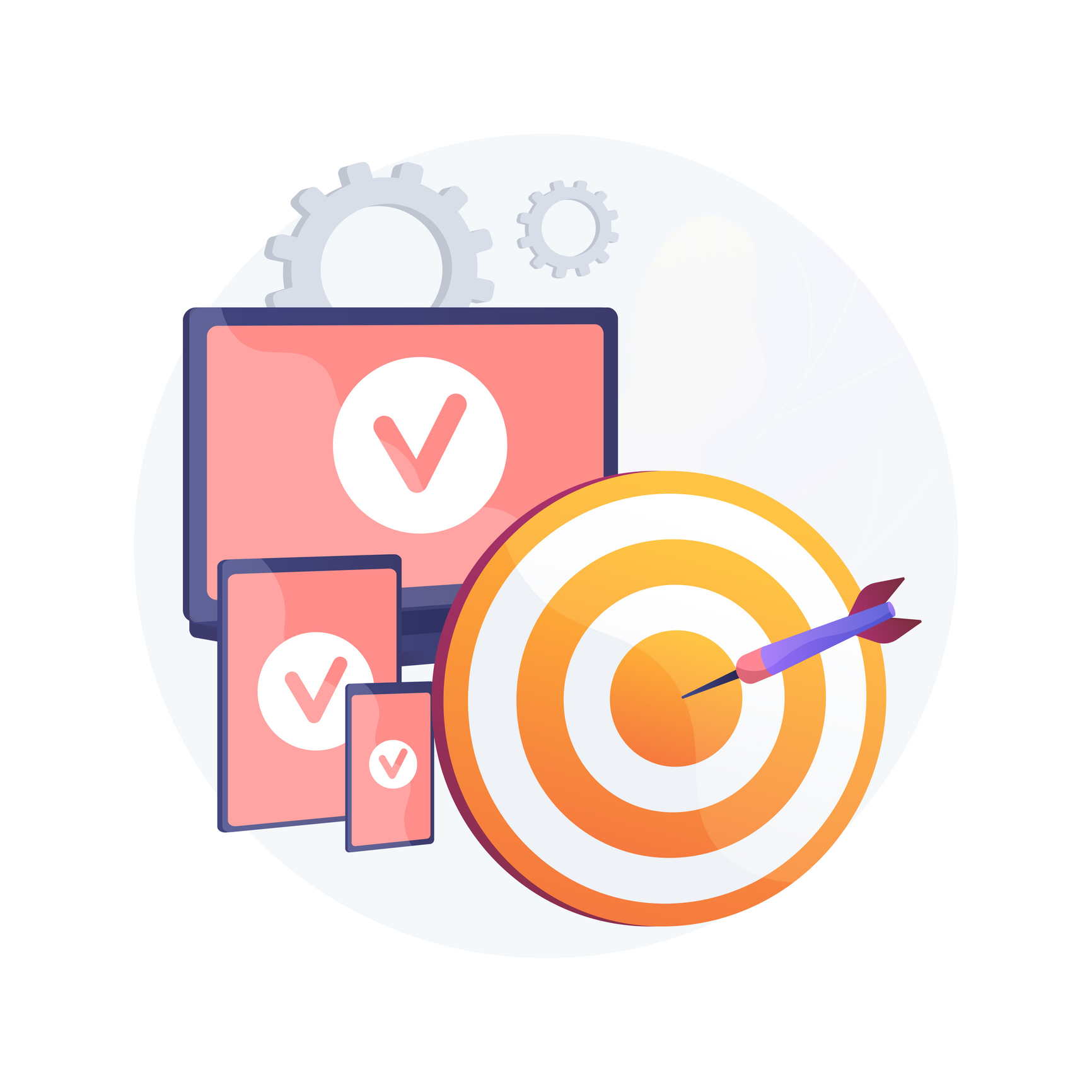
We’ll explore five critical building blocks that, taken together, establish highly personalized marketing and optimize your use of HubSpot marketing automation and other tools:





Why go to the trouble of personalizing your marketing? Because it works.


Action and sales: that’s what we all want out of our marketing. Targeted, personalized strategies and tactics will get you there.
The ANA’s marketing word of the year for 2020 was “pivot.” If your marketing isn’t personalized effectively, take heed of that word and use this guide to reinvent your strategy and get the results you need today and beyond.


When it comes to marketing and personalization, strategy is all. Otherwise, you’re simply throwing tactics up on the wall and seeing what sticks. Creating buyer personas is the key first step to developing a sound strategy.
Buyer personas are representations of your customers and their characteristics. They help you focus on and attract the right prospects to your business – those who are more likely to purchase and stay with the organization over time. They are critical to sales and marketing collaboration, content creation, product development, and sales follow-up – in essence, anything related to customer acquisition and retention.
Many companies believe that they already understand their audiences and their needs, and skip this step. But if you’ve never developed buyer personas, you might be missing key information that will help you better target your marketing efforts. They aren’t just an exercise to be checked off a list or a basic snapshot of customers, but a foundational tool in developing personalized marketing campaigns that will yield results for your organization.


Q: How many people do I need to interview to create good buyer personas?
A: There is no hard-and-fast answer to that question. HubSpot suggests starting with three to five interviews for each persona you’re creating. You may need to do multiple interviews for each category (customers, prospects, those who don’t know your company). When you start hearing similar answers and seeing patterns, you can stop interviewing.
A well-researched buyer persona can help an organization:

They also come into play when you’re developing segmented lists to target your digital marketing efforts (see Critical Element #2 for more detail). For example, instead of sending the same lead nurturing emails to everyone in your database, you can segment by buyer persona and tailor your messaging to what you know about those different personas. As a matter of fact, HubSpot allows you to create personas in your account to better target groups and categorize contacts.
How do you get busy people to take time to talk with you? Consider these three tips:
Make it quick and make it easy to get to yes. Keep the call to less than 30 minutes, create a discussion guide and let the interviewee know what questions they’ll be asked.
Use a third party to conduct interviews. Clients will open up more if they know it isn’t a sales call, and that they aren’t “on the record.”
Make it about them - not about you. It’s their time to talk about you. Be flexible about times, fit into their schedule, and send them a calendar invitation to confirm.
How to Create Buyer Personas
When developing buyer personas, focus on creating them for the individuals who have the most influence and decision-making power over the purchase of your products or services. For instance, if you’re a company that creates virtual reality experiences for employee training, your personas might include the director of learning and development and the directors of functions that would use that training. Most organizations will end up with a small handful of buyer personas for key individuals.
The content of final buyer personas will vary by the business, but typically, they contain:

Name and job title
The name should be fictional, but it can follow typical naming conventions (John Smith) or be descriptive of the role. Alliterative titles for the name and role are popular: Engineer Ed, Marketing Mary, Sales Director Sam.

Photo or illustration
Using a photo or illustration helps the buyer persona seem like an actual, instead of fictionalized, person and makes the persona more relatable.

Type of company
Industry and size, either in real terms (revenue, number of employees) or general (large established company, start-up).

Demographics
Age, gender, education, income, and budget for the function the buyer is responsible for.

Role
A description of what a buyer does that adds detail behind a job title. For example, “Directors of engineering have a strong technical background and hands-on experience. They can work in abstract terms and bring concepts and ideas to life.“ The role description also can include how their performance is measured and who they report to.
Key supporting information. This can include:
How do you get all this information? Through research: primarily, by mining existing data and interviewing customers and prospects.
Your current sales and marketing efforts can offer a great deal of data about your customers and prospects that can get you started on your buyer personas.

Hopefully, forms on website landing pages you’ve created have captured important demographic information for personas, such as names, job titles, and company type and size. (If you aren’t using forms to their greatest advantage, review and adjust them.)

Look through your contact database to uncover additional information, including trends about how certain leads or customers find and consume your content.

Consider your sales team’s feedback on the leads they’re interacting with most. What generalizations can they make about the different types of customers you serve best?
After you review your existing data, you most likely will have at least a general idea of the buyer personas you need to create. It’s time to talk with real people -- customers, prospects, and, ideally, potential buyers who don’t know your company at all.
Asking the right people about their needs, pain points, and opinions of your products or services will provide more depth and color to your buyer personas. To identify people to interview:

Tap into your customer base.
They’ve already purchased your products or services and engaged with your company, so they’re experts on your organization and what you offer. Some of them will exemplify your target personas. It’s helpful to talk with people who love your offering and those who might have some issues with it, as both will uncover information you can apply to personas.

Use your prospect list.
You’ve collected prospect information from your marketing efforts, and now’s the time to use it to complete your buyer personas. Prospects haven’t purchased your products or services and probably don’t know as much about your brand as customers do, so understanding them better can help fill out your personas (and build relationships with them that eventually bear fruit). Review the data you do have about them (such as any information you’ve collected through lead generation forms or website analytics) to figure out who might fit into your target personas.

Get referrals for people who don’t know your company at all.
This can be helpful under any circumstances, but may be necessary if you’re just getting started and don’t have a prospect database yet. Use your network — such as your coworkers, existing customers, and social media contacts — to find people you’d like to interview and be introduced to. If you don’t know where to start, try searching on LinkedIn for people who fit your target personas and see who has connections in common with you. Then, reach out to those connections for introductions.
Once you’ve collected all your data, evaluate it for insights and commonalities and use it to write individual buyer personas for key customer types. To create useful profiles:
Finally, validate buyer personas with stakeholders before giving them to your sales and marketing team to put into use.
Perhaps you’re having trouble setting up customer interviews, or you think you need more information about the industry your buyer personas are in. In addition to a general internet search, here are other ways to fill in research gaps:
HubSpot offers a buyer persona eguide and template you can use to learn more about developing personas. Following are the template steps the guide walks you through or if you’ve already defined them, you can skip to step 5 and add those personas directly into HubSpot.

Fill in basic demographic information you’ve collected for personas from your research and data mining.

Share what you’ve learned about your persona’s motivations. What keeps your persona up at night? Who do they want to be?

Help your sales team prepare for conversations with your persona. Include some quotes from your interviews that exemplify what your personas are concerned about, who they are, and what they want. Then create a list of the objections they might raise so your sales team is prepared to address those during their conversations with prospects.

Craft messaging for your persona. Tell people how to talk about your products and services with your persona. This includes the nitty-gritty vernacular you should use, as well as a more general elevator pitch that positions your solution in a way that resonates with your persona. This will help ensure that everyone in your company is speaking the same language when they talk with customers and prospects.

Repeat steps 1-4 until you’ve created all your buyer personas.

Set the personas property field in HubSpot. Once you’ve fleshed out the different buyer personas, make sure you then edit the personas property field and update it with your newly created buyer personas. This will allow you to quickly identify contacts associated to specific personas.
If you’ve written buyer personas, but haven’t looked at them for a while, it might be time to revisit them. Circumstances can change quickly – some more than others, depending on the industry you’re in. When you know that the wind is shifting and your customers may be changing, it’s time to revise your personas.
The initial personas may very well stay the same, but the details may not. For example, challenges and pain points can be very different, even year-to-year, depending on such factors as the economy, industry regulation (or deregulation), or emerging markets. To update personas, take the same steps you did when creating them in the first place:

Ready to Dive Deeper?

The age of generic, mass-delivered content is gone. No one has time to read every email they receive or eguide they get a link to – let alone those whose subject means nothing to them. Spam email is probably the best example of what lack of personalization can mean to your relationships with prospects – because the negative feeling about unwanted email is pretty universal.
On the other hand, engaging people with messages they’re interested in, when they’re interested in them helps you make stronger connections with prospects, who then are more likely to become customers. List segmentation is one important way to do that. It results in:

Higher open and click-through rates. By creating segmented lists, it’s easier to develop content that meets the needs of different targets, which results in better open rates and more click-throughs. According to MailChimp, the open rate on a segmented email campaign has a 14% higher open rate – and a whopping 101% higher click rate.
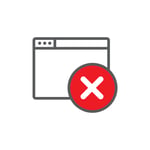
Fewer unsubscribes. Personalized content is relevant content and is less likely to lead to an unsubscribe – according to MailChimp, 9% fewer unsubscribes.

Better engagement. Customers who continue to click through on your emails, review your offers, and download your content are customers who are engaged with your company. They also are more likely to buy at some point. According to Experian, personalized emails generate 6 times higher the transactions rates and revenue as emails that aren’t personalized. And according to an Email Monday report for the Direct Marketing Association, 76% of all revenue came from segmented, targeted, and triggered campaigns.
Segmenting an email list involves breaking up contacts into smaller segments with like properties. Lists can be segmented in any number of ways – by demographics, industry, company size, webpage views, content downloads, and more.
Segmentation works with any marketing functions that are based on contact lists, including marketing automation and such functions as lead nurturing workflows. Segmented lists also can be integrated with other channels. For example, CTAs on a blog can be tied to certain segments so those in different buying stages receive different content.
List segmentation is only as good as the type, amount, and quality of the data you collect. For instance, if a contact fills out a form with only a name, age, and telephone number, you’ll probably need other pertinent information to segment them effectively.
You can segment your lists of contacts and leads by data collected on forms as well as the interactions they have with your marketing after they’re already a lead in your database. Actions can range from clicks on a CTA to website page views to social media interactions. For example, if a lead visits your pricing page, they might be nearing a purchasing decision. You can trigger automated nurture emails to continue that conversation and move them closer to buying.
And this is where your buyer personas also become valuable. Remember, HubSpot allows you to create personas in your account to better target groups and categorize contacts. You can use the information you collected for them to figure out which criteria you want to include in any given list.
To avoid deliverability issues, create lists to segment your contacts based on their interests and original source. Then suppress or delete outdated or unengaged contacts from your account.
First, determine the list segmentation you need. By understanding your sales goals and options for list segmentation, you can figure out the criteria that makes sense for your list. Sophisticated marketing platforms have the ability to create lists with almost unlimited criteria so you can drill down as much as you want. List criteria can be combined to filter contacts on more granular levels. In HubSpot, lists can be segmented by:
For more details on implementing list segmentation in HubSpot, visit Determine your list criteria in the HubSpot Knowledge Base.

For effective email campaigns, it’s important to keep your contact lists as clean as possible to improve deliverability (and results). Email engagement increases your inbox placement rates. Email senders with high rates of opens and clicks look more trustworthy to email security filters.
And, conversely, a lack of enthusiasm among your recipients can do damage to your sending reputation. A marketing email with an open rate of less than 15% sends a message to service providers that you may be sending spam. And most email accounts filter out emails that recipients aren’t opening or clicking.
In addition, if you send an email from HubSpot that results in a high rate of bounces or spam reports, your email account will be placed in a suspended state.
Each contact in your database should be organized based on their expressed interest in receiving marketing emails from you. You can refer to this data to ensure that your marketing email content is right for your audience.
Second, determine what kind of list you want to create: active or static.
Active lists automatically update. Contacts join the list whenever they meet its criteria and leave the list when they no longer do. An active list would be valuable with an email campaign that runs over time and you want the list to update with new contacts that meet the criteria.
Static lists do not update as new contacts meet the criteria, but are a snapshot of a group that met a certain set of requirements when the list was created. A static list can be helpful to understand contacts that met criteria on a particular date and see which contacts no longer qualify for the list. Contacts can be manually added and removed from static lists.
For more on different types of lists, visit this HubSpot Knowledge Base article.

Ready to Dive Deeper?


Smart content, also referred to as dynamic content, is website content that changes based on the interests or past behavior of the viewer. Smart content offers a more personalized experience to website visitors than static content can provide.
Using information from marketing automation or CRM systems such as HubSpot, website pages can be customized for different types of visitors. For example, you can designate pages to provide a different experience for leads versus customers. That way, content can be targeted to the reader, crafting a more individualized experience and potentially boosting conversions. Many elements of your website can be made into smart content: assets, images, pop-up offers, CTAs, and more.
Smart content exists in other forms, too. Recommendation engines such as the one used by Amazon serve up products and services based on your purchasing behavior. Personalization fields in emails are another example of smart content, as are targeted online ads.
According to Marketo, 73% of B2B prospects say a brand must have a deep understanding of their needs and 51% won’t engage if content isn’t relevant to them. Given those kinds of stats, adding smart content to your marketing arsenal, or increasing its use, is one smart move.

Creating content can be a lengthy process, usually filled with multiple drafts (at least for longer pieces) and multiple approvals (for just about everything). You don’t want to waste your time on content that ends up on the shelf because it wasn’t appropriate for your buyers or your business. Answering some key questions before you start can focus your efforts from the start.
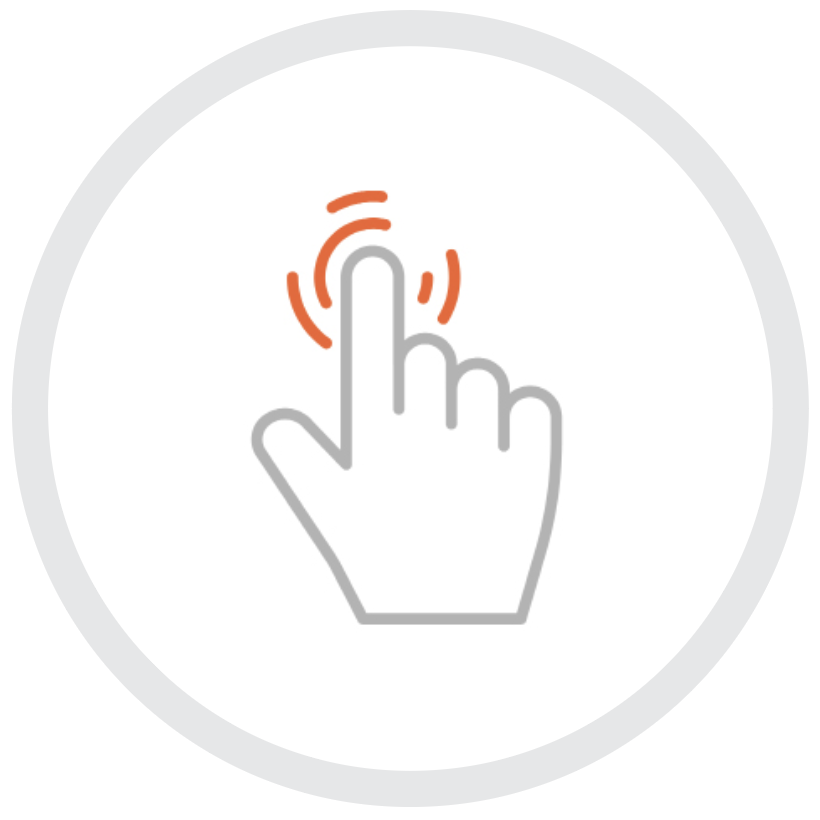
Who are you creating smart content for?
Determining your target audience will help you figure out the smart rules that will help you adapt your website content to visitors. You can apply six different rules to show content based on:
All of these rules offer drill-downs with more details so you can refine your targets. The rules you set up will depend on your marketing goals. For example, if you want to target visitors from Canada, the country rule would be the most logical one to apply.
For anonymous visitors, rules will be applied based on data collected from their IP addresses. For known contacts, you’ll be able to leverage information you’ve already collected for segmented lists to apply rules for contact list membership and lifecycle stage.

What value does your smart content offer?
All content should add value, whether to your audience or to your website. Writing content optimized for SEO means your website might attract more visitors. And since some of those visitors likely will fit your buyer personas, you should have some idea what type of content might be helpful to them once they do find your website.
But when you take the next step into smart content, you’ll want to make doubly sure that the content you’re serving up is relevant to your audience. You don’t want to waste your time or add complexity to your website for no reason. And while it’s bad enough to fill a website with content that’s not relevant or interesting, you don’t want to present content directly to visitors that are not on point. The wrong assumptions about content that fulfills their needs means you’ll lead them down a path they won’t want to travel – and you’ll lose them along the way.
To avoid that, always ask yourself why you’re creating content and what value it might have to your audience. If it doesn’t answer their questions, solve their problems, or improve their user experience, rethink it and revise your plans.

Where do you want to add smart content?
Once you’ve determined your audience, the next step is choosing the elements of your website to personalize. HubSpot customers who host their websites on HubSpot will be able to add personalization to calls-to-action, forms, and rich text modules on website pages, landing pages, and emails.
Adding personalization to one or two elements per page is best. Too many add complexity, so limiting the number makes it easy to manage and measure how smart content is performing.
For example, let’s say that you have new content to offer that’s targeted toward marketing-qualified leads. You could create a smart CTA that takes contacts in that lifecycle stage to that content. You also could create a smart form to insert on your landing page and offer additional resources to those leads. You could do the same on your thank-you page.

What do you want to designate as default content?
For every piece of smart content, you need to offer a default version that displays to visitors who don’t fit your smart rules. The default content needs to be broad enough to appeal to just about everyone. And remember that not every webpage will be suitable for personalization, so sometimes it makes sense to offer the same information to all visitors.

How will you measure performance?
As you implement smart content on your website, you need to review its performance regularly. Metrics can include the number of page views, form submissions, and clicks and click-through rates. To set realistic goals, analyze your previous performance data and use it to establish baseline metrics. If you notice that your smart content is underperforming, it’s time to change up your personalization strategy.

The Smart Content tool is built on top of the Contacts database in HubSpot. It can recognize who is looking at the web page and then display content tailored to them.
When a visitor first opts-in to your marketing by completing a form or making a purchase, the Contacts database begins to store information about them – what they’ve looked at or what contact information they’ve given.
Once your Contacts tool creates a profile on someone, you can use what you know about that person to provide relevant, targeted, personalized marketing.
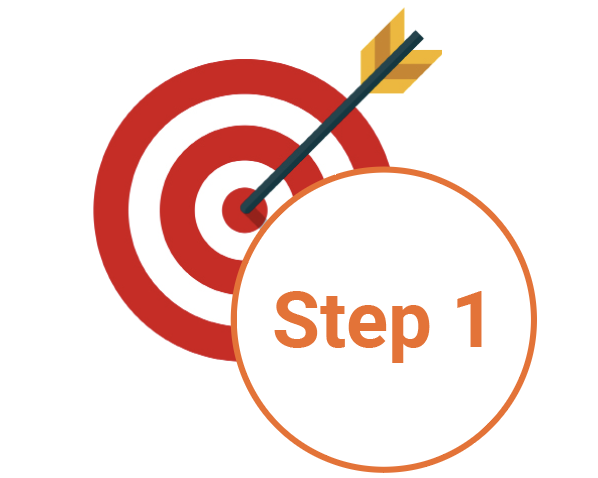
To begin, you have to decide who you are trying to target. Leads? Buyer personas? People from Boston? Once you’ve chosen your audience, set up the correct segmentation in HubSpot. To do so, create an active list to collect all of your contacts who fit into that segment.
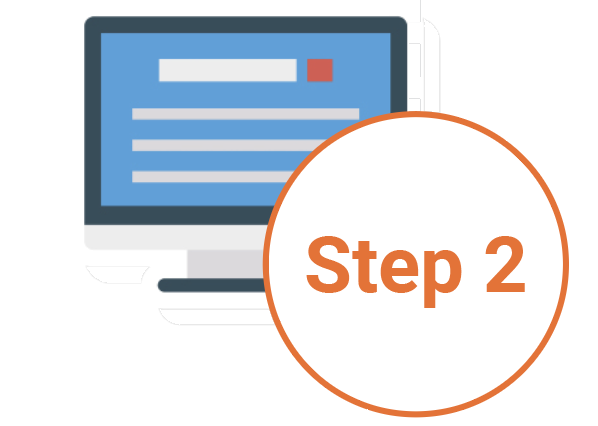
Once you have your contacts properly segmented, it’s time to set up smart content. If you are using HubSpot’s Content Management System (CMS) Hub, then any of your rich text modules are able to support smart content. To create it, click “Make Smart” at the top right-hand corner. You will then choose the segment you wish to target by picking either a Contact List or Lifecycle Stage. Then, select the contact list that you created earlier.

Now, add your smart content, tailoring it to that buyer persona. You can set as many smart rules as you would like to tailor your content to multiple segments.
While some smart content is short, sweet, and to-the-point, some also can be lengthy – eGuides and eBooks, white papers, case studies, and so on – and take time, money, and expertise to produce. You will always need to create some from scratch. But you can maximize your resources and produce enough smart content for personalized marketing through repurposing.
Repurposing simply means taking a piece of content – usually a long-form piece such as a white paper or eBook – segmenting it and using it in different formats. You also can take short pieces of content and turn them into longer ones: blog posts to eBook, for example.
When considering content to repurpose, ask yourself these questions:Ready to Dive Deeper?

Not all leads are created equal. According to HubSpot, only 10% typically convert to customers. That’s why lead scoring is so important.
Lead scoring is the process of ranking the sales readiness of a lead using a predetermined methodology – often a numerical points system, though companies do use other ways to rank leads. You determine which criteria indicate a sales-qualified lead and then assign point values to the criteria. The final score indicates whether or not a lead is ready to continue moving down the sales funnel – and you can personalize marketing and sales efforts accordingly.
Done correctly, lead scoring offers several benefits:

Better marketing campaigns.
With lead scoring, you can identify campaigns and channels that result in high-quality leads and tailor your marketing strategy to generate more of them.

Sales and marketing alignment.
Distinct (and agreed-upon) rules for scoring leads mean passing on qualified opportunities to sales, strengthening the relationship between the two functions.

Revenue increases.
Accurate lead scoring helps sales prioritize leads and can result in more and faster conversions.
You can score leads based on multiple attributes, including professional information they’ve submitted to you and how they’ve engaged with your website and brand across the internet. Every company has a different model for assigning points to score their leads, but one of the most common ways is using data from past leads. By looking at data from both customers and non-customers, you can decide which attributes best indicate a potential buyer and weight them accordingly.
To decide if your company is ready to implement lead scoring, ask yourself:



If the answer to those questions is yes, you are in a good position to begin lead scoring. Here’s how.
The simple method for calculating a lead score outlined here is a great start. However, the most mathematically sound method is one that employs a data mining technique, such as logistic regression. It involves building a formula in Excel that calculates the probability that a lead will turn into a customer. It’s a holistic approach that considers how all customer attributes -- like industry, company size, and whether or not someone requested a trial -- interact with one another. This resource explains more.
Here are five different ways to award points for leads based on the type of data you collect from people who engage with your business.
Demographic information. If you’re selling to people of a certain demographic, ask demographic questions on your landing page forms and use the answers to see whether they fit into your target audience.
Company information. You also can use landing page forms to find out the size or annual revenue of the company a lead represents and give points to those in your target audience.
Online behavior. How a lead interacts with your website says a lot about how interested they are in buying from you. Take a look at leads who eventually became customers. Which and how many offers did they download? Which and how many pages did they look at? Those who visited high-value pages or forms (pricing pages or demo requests) or had multiple page views deserve higher lead scores.
Email engagement. Opens and click-through-rates on emails demonstrates higher engagement with your organization. You might give a higher lead score to those who click through on high-value emails, such as demo offers.
Social engagement. How engaged a lead is with your brand on social networks also can indicate how interested they are. In addition, if your target buyers are active on social networks, then you might award points to leads with certain Klout scores or number of followers.
Just as you can award points, you also can create negative points from leads that:
Your sales team, customers, and analytics will help you piece together what content is most valuable for converting leads into customers, which will help you attach points to certain offers and emails.

Q: Can HubSpot assist me with lead scoring?
A: Yes! Users with professional and enterprise accounts can customize the default HubSpot score contact property to qualify leads based on custom criteria. You also can create custom score properties for your contacts, companies, and deals. Learn more here.
There are many different ways to calculate a lead score. The simplest way to do it is:

Calculate the lead-to-customer conversion rate of all your leads.
Your lead-to-customer conversion rate is equal to the number of new customers you acquire, divided by the number of leads you generate. Use this conversion rate as your benchmark.

Review your data and choose the attributes that best indicate a potential sale.
While you’ve followed the science of marketing and collected data about conversions, there’s also some art involved in choosing which attributes to include in your lead scoring model. Different people can do this exercise and come up with different models. As long as lead scoring is based on data, your model should be helpful.

Calculate the individual close rates of each of those attributes.
Figure out how many people become qualified leads (and ultimately, customers) based on the actions they take or who they are in relation to your core customer. You’ll use these close rates to actually score the leads in the step below.

Compare the close rates of each attribute with your overall close rate and assign point values accordingly.
Look for the attributes with close rates that are significantly higher than your overall close rate. Then, choose which attributes you’ll assign points to, and if so, how many points. Base the point values of each attribute on the magnitude of their individual close rates. The higher the close rate, the higher the score.
If you’ve been using marketing automation and CRM for some time and are ready for a more robust way to evaluate leads, consider predictive lead scoring.
Predictive lead scoring uses an algorithm to predict whether or not a lead is qualified. The algorithm can include: property information, behavioral data, social information, demographics, and media written about your company.
Nailing down a consistent formula for lead scoring can be difficult, but predictive lead scoring automates the process and eliminates guesswork. The algorithm looks at what your customers have in common as well as what leads that didn’t close have in common. From there, the lead scoring algorithm comes up with a formula that automatically buckets leads so you can identify the most qualified ones.

HubSpot’s predictive lead scoring tool, available to enterprise customers, looks at:
To set values for these properties, HubSpot analyzes:

Q: Is one lead score enough?
A: For a new organization, it might be. But as a company scales, it likely will sell to new targets, develop new product lines, or move into new regions. Sales goals might change; a company might focus on up-selling and cross-selling, rather than pursuing new customers. If your contacts aren’t “one size fits all,” your scoring system shouldn’t be.
Ready to Dive Deeper?

Account-based marketing (ABM) is a focused growth strategy that involves marketing to key business accounts directly, on a one-to-one basis. In account-based marketing, marketing and sales collaborate to identify target organizations and key stakeholders within them and then develop marketing strategies and tactics to appeal to their specific needs.
ABM takes personalized marketing to a whole new level – not just up a notch, but an enormous leap forward. It touches on all the other concepts we’ve already discussed and brings them together into one targeted, highly customized strategy.

Over the past few years, ABM has grown in popularity because it works. According to ITSMA, about 85% of marketers who measure ROI describe ABM as delivering higher returns than any other marketing approach. Benefits of ABM include:
Greater marketing and sales alignment.
ABM puts marketing and sales teams on the same page so they are focused on the same accounts and how to target them, bring them to the table, and close the deal. This transparency and alignment help ensure that all communications, interactions, content, and more are consistent for the accounts you work with.
Maximize your business’s relevance among high-value accounts.
ABM requires you to personalize everything (content, product information, communications, and campaigns) for each account you invest resources in. It allows you to position your business in such a way that makes it the ideal option for your target accounts.
Deliver consistent customer experiences.
ABM can be a lengthy process, and for your efforts to be remarkable, you must maintain a long-term sense of delight among your accounts. This is how you’ll make prospects feel as though they’re your business’s market of one. With the marketing and sales alignment that ABM promotes, everyone involved will be able to deliver that feeling of consistency in everything they communicate and share with each account.
Measure return on investment (ROI).
With account-based marketing, you can easily measure ROI because you know exactly which companies you’ve invested resources in and whether they paid off in a sale. This also helps you develop strategy moving forward, because you’ll have confirmation about whether certain types of businesses were a fit for yours.
Streamline the sales cycle.
Focusing efforts on specific high-value target accounts is more efficient; it saves resources and allows you to spend more time on the stages of the cycle that positively impact the bottom line, moving them along faster. Closing also is streamlined through ABM; your chances of converting accounts increase thanks to better alignment, consistent customer experiences, and personalization.
Expand business through account relationships.
By taking the time to build trusting relationships with key accounts, you’ll expand business by retaining those valuable customers longer. Considering it costs more to get new sales than to retain customers, customer retention will positively impact your bottom line. In addition, as a result of personalized, thoughtful, and consistent customer experiences, accounts will become loyal to your business over time — and loyal customers become your best promoters.
These seven steps that will help you create and automate an ABM strategy. They are specific to HubSpot’s ABM software, but also apply to other ABM platforms (which HubSpot can integrate with).

Create your Ideal Customer Profile (ICP).
This is similar to a buyer persona, except it targets entire organizations rather than individuals. Your ICP should include information on company size, revenue, industry, and location. Once you’ve created your ICP, you should be able to use this information in your ABM software to manage your audience.

Set up target accounts.
Once you’ve created your ICP, you can set up target accounts in your ABM software. A great ABM software will use AI-powered target account recommendations to automate researching companies that are a good fit. These tools will help you manage and then segment your lists so you can deliver personalized content to your target accounts.

Integrate your ABM, marketing automation software, and CRM.
Integrating your marketing tools is important in the automation process. If your ABM software doesn’t interact with your email marketing software or your ad tools, then you won’t be able to automate the process. And if it doesn’t interact with your CRM, it’ll be impossible to know if leads become accounts and track the ROI of an account-based campaign. By integrating these tools, you’ll have your ICP research, target accounts, content, and CRM all in one place.

Build your campaigns.
When you have your ABM software and marketing tools set up, it’s time to create your campaigns. To start, you’ll want to determine the channels you’ll use and what actions will trigger an automated workflow. First, look at your target accounts and find out where they spend their time online. Then think about your customer journey and set up automated workflows. For instance, you can have a task created for a sales rep when someone who works at one of your target accounts interacts with an email, your website, or blog content.

Personalize your content.
To do this, you’ll create your content and use your automation tools to segment your audience. With your ICP set up, it should be easy to create your content based on your target audience. The content in your ABM campaigns will be similar to other marketing content, except that you’re now targeting specific accounts and companies. Ultimately, your messaging should address specific pain points and how your company can solve your target account’s problems.

Tailor your engagement.
Another aspect of your ABM strategy will be collaborating with your sales team so they can tailor their engagement with target accounts. A great way to do this is through automation tools that can send follow-up emails or suggest tasks based on prospect behavior. That’s why it’s important for your CRM and ABM software to work together. However, remember that even though automation is a part of executing ABM strategy, sales outreach and content should still be personalized.

Set up a dashboard to assess ongoing efforts.
The last step to automating your ABM strategy is to track and measure your efforts. With your ABM software, you’ll want to see information at-a-glance on a dashboard. If your ABM software offers company scoring – which is similar to lead scoring, but on an entire company basis -- you should use it. Finally, you should consider running A/B tests so you can see which messages appeal most to your ICP.

HubSpot offers out-of-the-box features in its ABM software that help you execute your ABM strategy. With it you can:
Establish contact properties, such as multiple buying roles a contact plays during the sales process. Contacts can have more than one role, and they can share the same role with another contact.
Create ads for your target accounts. If you’ve connected your LinkedIn Ads account to HubSpot, you can create a company list audience to automatically sync companies from your targeted accounts or a specific company profile tier to the matched audience in LinkedIn.
Establish company properties, including target accounts and ideal customer profiles in three tiers that represent how closely a company matches the profile.
Understand a target account through its account overview, which displays activities and contacts associated to the company, internal stakeholders, deals, and tracked page views.
View recommended accounts to target. HubSpot suggests companies that are good fits for your ABM efforts.
Work with a target account using a playbook, which offers guidance for team members when they speak to prospects and customers.
Create contact and company lists. HubSpot creates contact lists based on ABM contact and company properties.
Generate reports to analyze your target accounts. You can analyze your existing ABM efforts, refine your ABM strategy going forwards using this data, and find answers to sales and marketing questions.
Ready to Dive Deeper?

Q: What should I focus on: inbound marketing or ABM?
A: Both. On the surface, inbound marketing and ABM appear to be entirely different creatures. One – inbound marketing -- is foundational and designed to widen your circle of prospects. The other – ABM -- is highly targeted and narrows your focus to the most valuable prospects. However, while they are different, they are two halves of a whole that work together to create a highly effective marketing program.
Five critical ways to personalize your marketing and sales efforts, all designed with one goal in mind: converting prospects into customers as quickly as possible.
HubSpot’s marketing automation platform, CMS, and ABM software work together to create an efficient and effective solution to marketing personalization needs. As a Platinum HubSpot partner, Marsden Marketing is happy to do a free assessment of your marketing efforts and help you optimize the use of your HubSpot Marketing Hub.
B2B growth marketing+pr agency Trevelino/Keller acquired Marsden Marketing in 2024, including its industry-leading MM Growth Marketing solution, powered by a data-forward approach rich in technologies including HubSpot, Salesforce and Pardot.
1042 Northside Drive NW
Suite 960
Atlanta, GA 30318
(404) 214-0722
info@marsdenmarketing.com